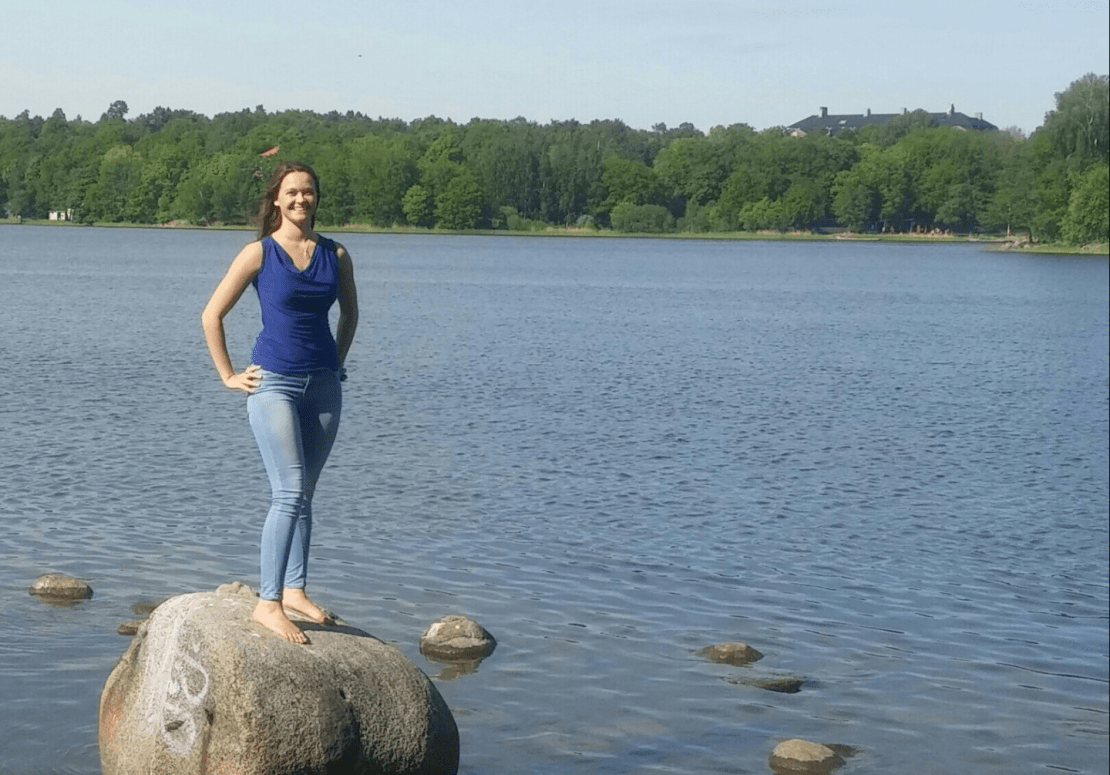International Research Experiences for Students (IRES) is a program funded by the National Science Foundation to support active participation of US undergraduates in international research projects. Vanessa Esaw, Nick Kulacz, Nick Jensen, Jack Nuckles, and Samantha Pedek participated in the IRES program through UW–River Falls to work on IceCube research for the summer at Stockholm University.
Growing up on a small, secluded hobby farm in southwestern Wisconsin, the night sky played a major role in my upbringing. Since there is almost no light pollution, the night sky was always bright and clear. In the summer months, my bedtime was determined by the time a specific satellite went over the house. Every year, my family would gather up all the blankets in the house and lay outside to watch meteor showers for hours. From a young age, I loved the idea of learning more about the stars and planets, and as I got into high school, I fell in love with physics. My original plan was to become a high school physics teacher, and I found the University of Wisconsin–River Falls (UWRF) not only has a fantastic physics program but is also involved with IceCube. I had heard about IceCube in 2013, when it won Physics World’s Breakthrough of the Year, and working for IceCube became my new goal and dream.

Dr. Surujhdeo Seunarine encouraged me to apply for an IceCube research position during my first year at UWRF. I also knew a few other IceCubers, Laura Lusardi and Kelsey Kolell, who strongly recommended I apply. I was terrified that I wouldn’t get accepted because of my lack of experience, but thankfully I did. This summer was my second summer working for IceCube, and I had the experience of a lifetime in Stockholm, Sweden, working with Dr. Chad Finley.
I started my project in parallel with Nick Kulacz, another student from UWRF, with the main focus of testing whether optical fibers would be better at detecting extragalactic supernovae than the traditional IceCube sensors. Supernova neutrinos have relatively low energy, typically 1-20MeV, and when they interact within the ice a positron is created. These positrons produce Cherenkov radiation that can be detected by IceCube. Since supernova neutrinos have low energy but come in large numbers, IceCube will “see” the background noise of the sensors increase significantly for periods of time. The challenge with extragalactic supernovae is the neutrinos are spread so thin by the time they reach IceCube that there are too few to notice above the normal detector noise. Currently, it is impossible to detect extragalactic supernovae due to background noise.

In order to test whether optical fibers would be able to detect extragalactic supernovae, we simulated an ideal cylindrical “fiber,” positron interactions, and propagation of the corresponding Cherenkov radiation. This determined the probability of detecting the positron produced from an extragalactic supernova neutrino with respect to how far away it traveled from the ideal, 100 percent efficient, cylindrical fiber. Then we set out to find the geometric effective volume of the cylindrical fiber. The effective volume is a way to compare complicated detectors in a fairly simple way. It is the volume for which a similar detector is 100 percent efficient. This value can then be scaled to account for other aspects of detector efficiency (e.g., photomultiplier response), which helps determine the detector design. The effective volume can then be used to compare the fiber and the current IceCube sensors, providing a valid argument as to which detector would be better for potential use in a future extension of IceCube.
Overall, this experience has taught me invaluable life skills and broadened my perspective. It has furthered my passion for physics while challenging me in unexpected ways. I am now much more confident in my problem-solving abilities. But I have learned more than science. I have learned about another culture and another way of life. Every person I met in Sweden was very hospitable and welcoming.
This experience has been the opportunity of a lifetime, and I am very thankful to have taken part in it.
See more stories featuring summer internships: